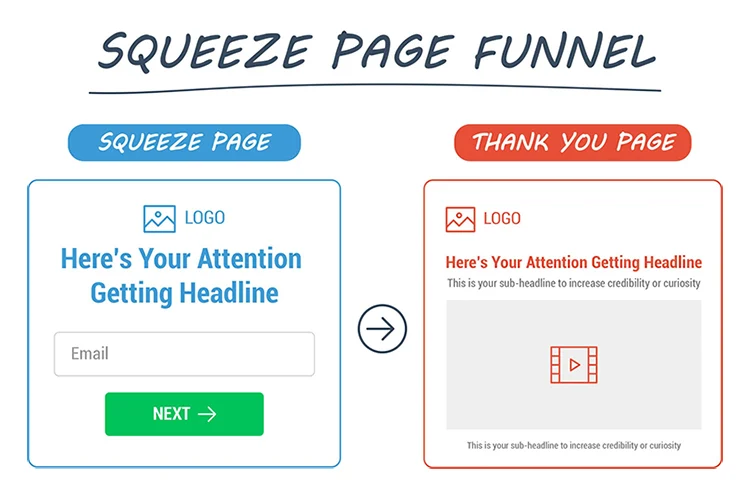As I’ve said before, a funnel is just the automated way of leading a prospect or customer through your sales process. Making it simple is best. I’ve talked about digital or online funnels before. There are some basic aspects or parts that make up funnels, and a given funnel may have some, many, most, or even all the parts built into it. Those parts might include:
- An advertisement, or some way to entice a lead to enter the funnel
- A headline
- A greeting
- A statement of the problem you solve
- The solution you provide
- Your offer, which may include –
- – the main offer
- – an upsell
- – a downsell
- – a cross-sell
- Collection of contact information
- Collection of payment
- A thank-you page
- A confirmation message
- One or more educational or relationship-building messages
A short & simple lead generation funnel might consist of a problem statement, the offer of a lead magnet, collection of contact information, and a thank-you/delivery message. It’s always best to “strike while the iron is hot,” as they say, and offer something for sale immediately after you collect their contact information, but we’ll go into that in a few minutes.
It’s now possible to create a funnel directly within the Direct Messaging stream of Instagram, using DM automation software. Traffic is often the single biggest problem and expense for those creating a funnel. Any Instagram account with 10,000 or more followers already has the potential for a steady stream of traffic.
DM automation tools (my marketing agency uses a tool called Chatmatic) allow you to automate conversations with prospects, based on them DMing an Instagram account. Chatmatic also lets you initiate a conversation with someone who interacts with a post or an Instagram Story that they’ve posted.
The conversation is the funnel – you don’t need complex pages, or to even take the prospect away from Instagram, where they’re comfortable. The DM automation tool makes it possible to offer the prospect choices (“Is your basement too wet, or too dry?”, “What size shirt do you wear? Small, Medium, Large, XL, XXL” etc.), collect contact information like email or mobile number, and even deliver a digital file or information by offering a button with an embedded URL.
Since the DM automation tool can collect contact information (name, email, mobile number, birth date, etc.), you can then move this information to an email list or similar contact database. Most importantly, you can use the funnel on Instagram to reach back out to your prospect within 24 hours and offer to sell them something that is related to the problem your funnel addresses. As an example, let’s say you sell household heating & cooling solutions, and your automated conversation was about problems with the prospect’s basement. Once you collect their contact info, you can offer them a PDF about basements, and why it’s important to keep them at a constant temperature and humidity level. Within Instagram’s 24-hour contact window, you can follow up with that prospect. If they’ve said their basement is too wet, you can offer to sell them a dehumidifier. If it’s too dry, you can offer them a humidifier. If they take either offer, you can then offer upsells (“Keep your new machine in top shape with our maintenance kit: normally $250, now only $198”) and downsells (“Don’t need the complete kit? Get just the brush and cleaning fluid for $49 plus S&H”) on the sales page on your website, or even from the Instagram conversation itself.
By moving the prospect’s contact info to a list, you can then continue to build a relationship with them, and send them marketing messages. Why is moving followers “off the algorithm and onto your list” important? Instagram’s current system will show your posts only to about 8% of your followers. An email message is likely to be seen by around 16% of your list, effectively doubling your contact ability. And SMS, or text messages, are opened within minutes by approximately 90% of the recipients!
If you’re serious about using Instagram to make sales, you simply must build a list, and then follow up with a sales message. Ideally, by SMS.



